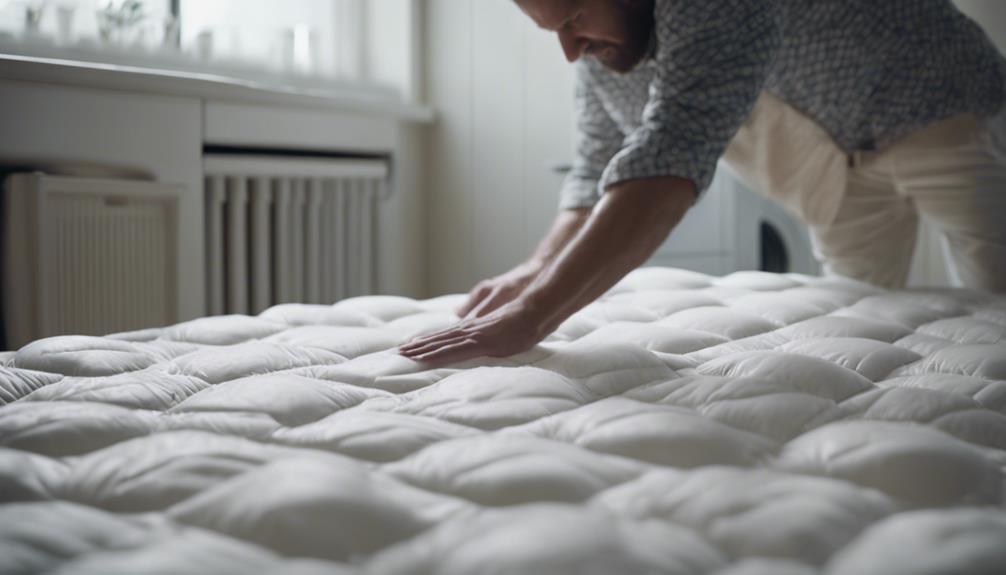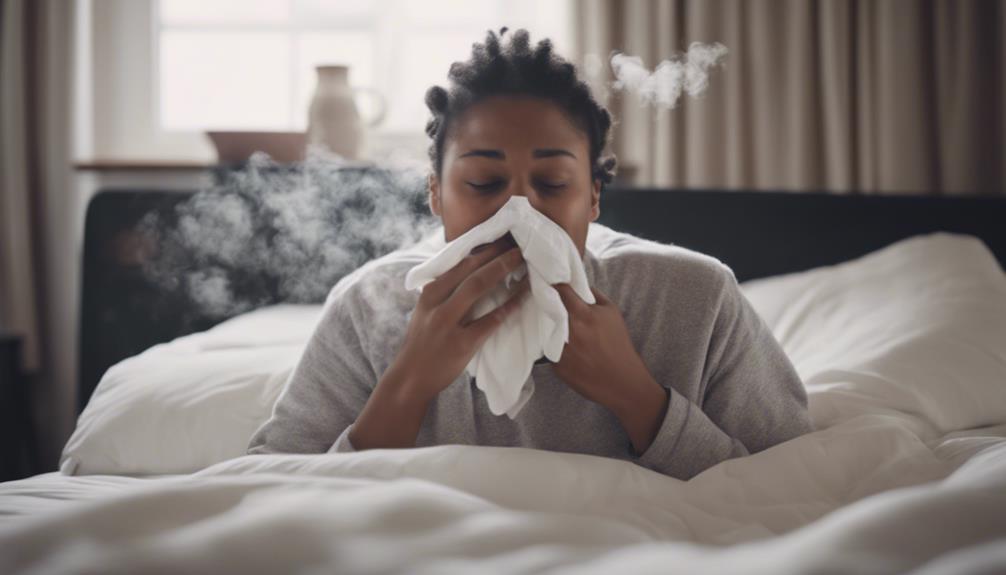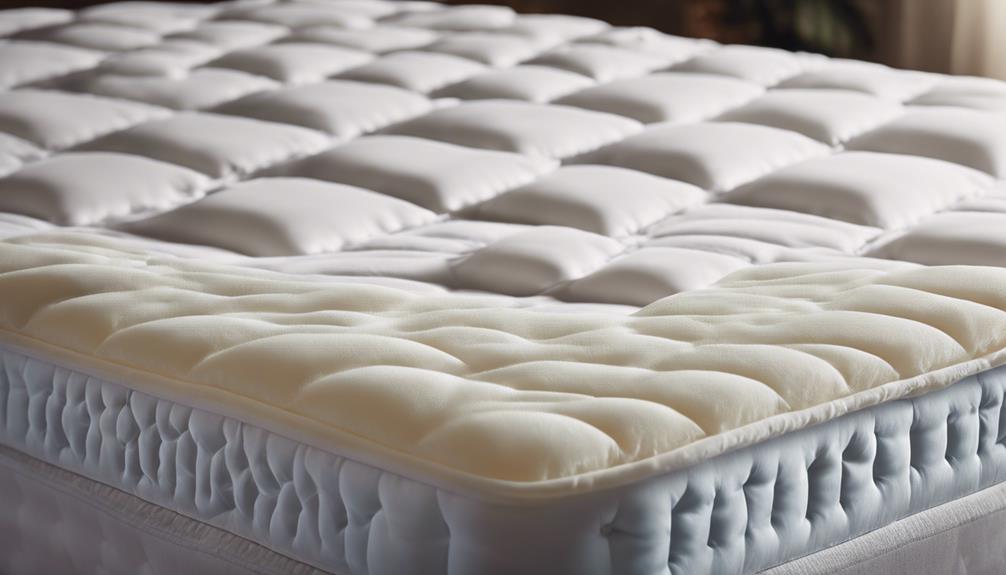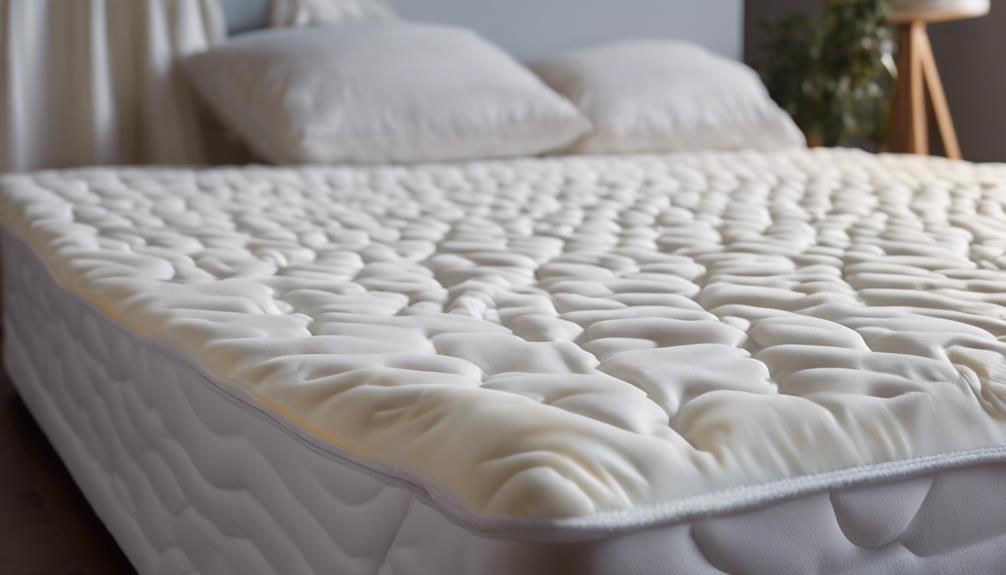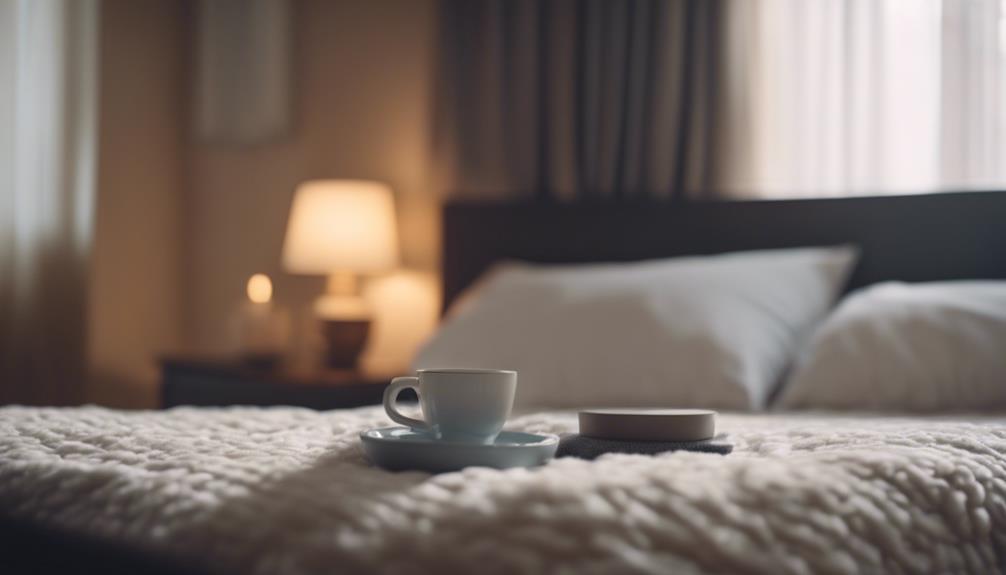Yes, you can place a mattress pad in the dryer, but it’s crucial to first check the care label. Adhere to the manufacturer’s recommended drying instructions and utilize a low heat setting to prevent any damage. Exposing the pad to high heat can potentially harm the fabric and diminish its lifespan. For foam pads, take extra care as their heat sensitivity can vary. Consider air drying as a viable alternative. It is imperative to follow the care label to ensure longevity and maintain quality. Familiarizing yourself with the specifics of your mattress pad will aid in preserving its integrity. Discover the best practices for caring for your mattress pad to prolong its lifespan.
Key Takeaways
- Check care label for dryer suitability.
- Use low heat setting to prevent damage.
- Some pads can be tumble dried safely.
- Foam pads may not be dryer-friendly.
- Consider air drying for quality retention.
Proper Care Instructions for Drying Mattress Pad
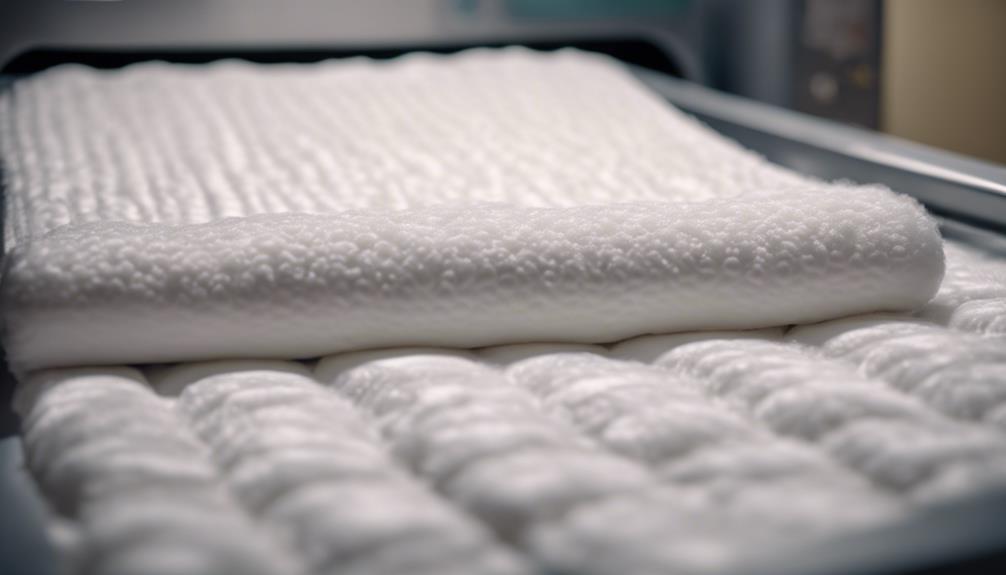
When drying a mattress pad, always refer to the care label for specific instructions on tumble drying. It's important to follow these care instructions to guarantee that your mattress pad remains in good condition.
Most mattress pads can be safely dried in a dryer using a low heat setting. This gentle approach helps prevent any damage to the fabric. Avoiding high heat settings is vital as they can cause the fabric to deteriorate faster.
If you're unsure about whether your mattress pad is suitable for the dryer, opt for air drying instead. Air drying is a safe alternative that can help preserve the quality of the fabric over time.
Importance of Following Manufacturer's Guidelines
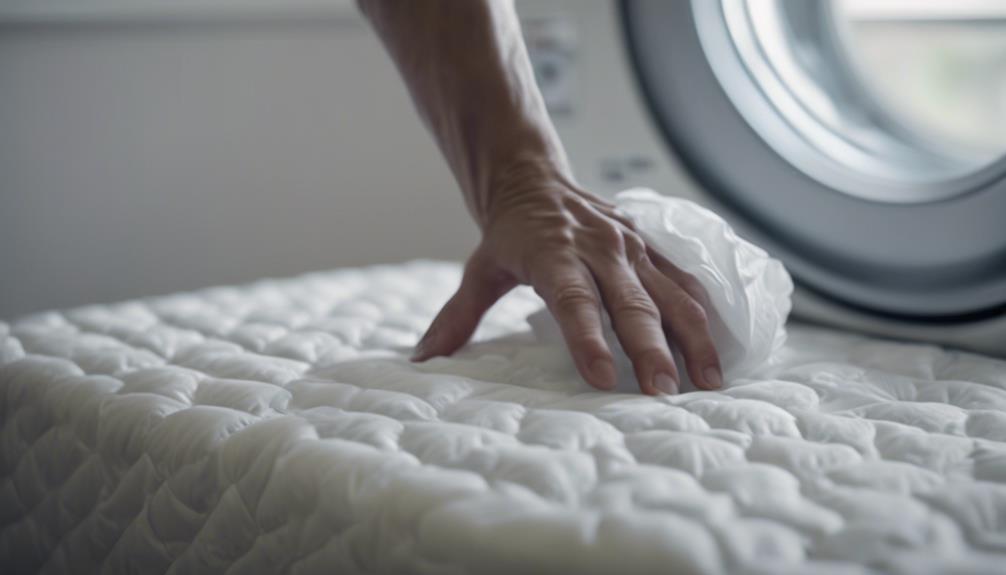
After carefully reviewing the care instructions for drying your mattress pad, adherence to the manufacturer's guidelines is crucial to maintaining its quality and performance. Following the care label instructions provided by the manufacturer guarantees that your mattress pad remains in excellent condition for an extended period. The manufacturer's guidelines for drying your mattress pad are specifically tailored to the materials and construction of the pad, helping to prevent damage, shrinkage, or alteration of the fabric or filling.
- Care Label Instructions: Always check the care label instructions provided by the manufacturer for specific guidance on drying your mattress pad.
- Manufacturer's Guidelines: Adhering to the manufacturer's recommended drying methods can help preserve the integrity of the pad.
- Machine Drying: Using a gentle cycle and low heat setting as advised by the manufacturer can prevent potential issues with the mattress pad during the drying process.
Recommended Heat Settings for Drying
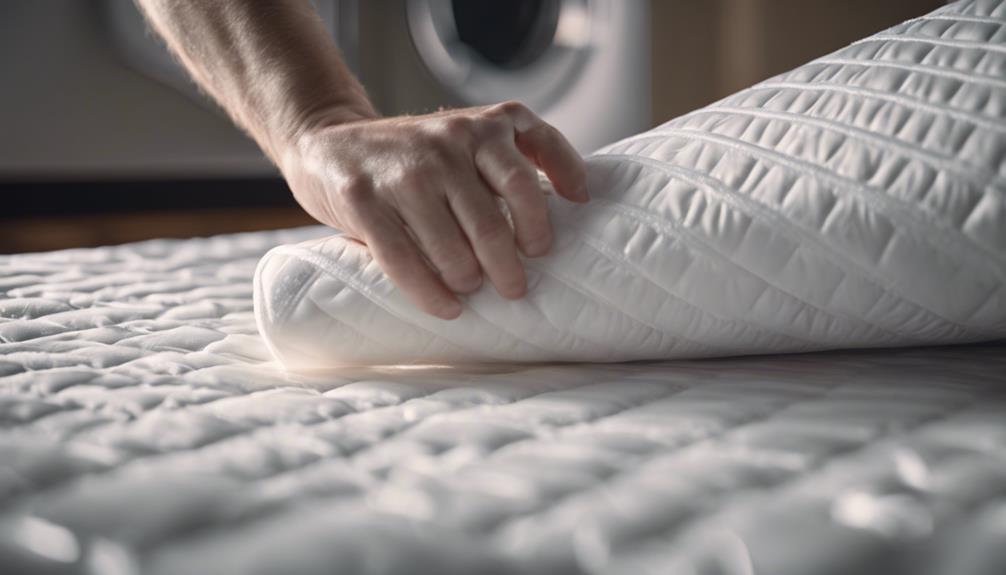
Using low heat settings while drying a mattress pad in the dryer is recommended to prevent any damage to the pad. High heat settings can compromise the integrity and lifespan of the mattress pad, so opting for low or delicate heat is essential. By following the cleaning instructions provided by the manufacturer, you can determine the ideal heat setting for drying your mattress pad.
Low heat ensures gentle treatment of the fabric, allowing the pad to dry effectively without causing harm. This approach not only maintains the quality and functionality of the mattress pad but also guarantees it's thoroughly dried for immediate use. Whether you've just removed the mattress protector from the bed or it has undergone machine washing, always remember to dry the protector on low heat to keep it in top condition throughout the drying process.
Preventing Damage to Mattress Pad
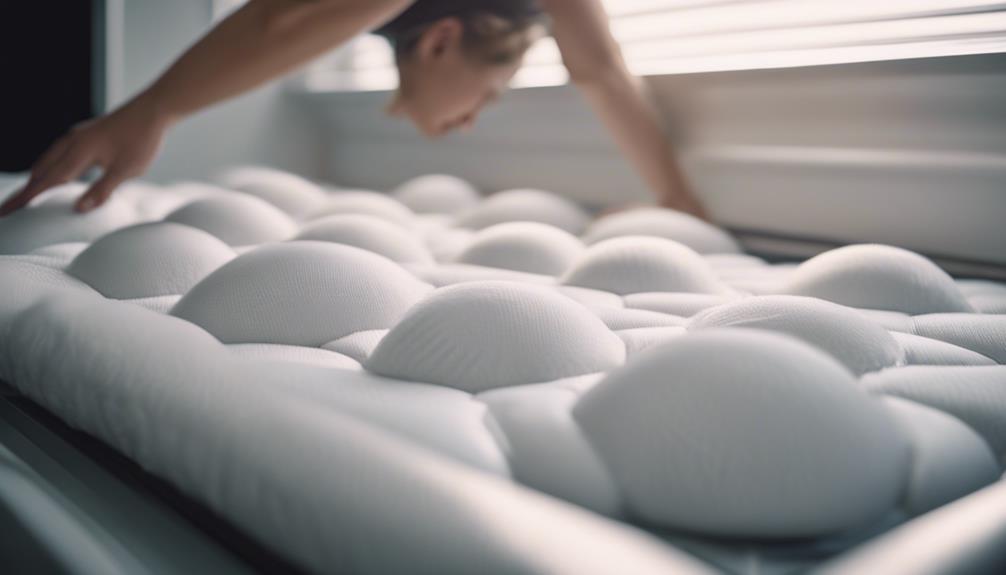
To safeguard your mattress pad from potential damage, always heed the care label instructions for proper drying methods. It's crucial to follow the manufacturer's guidelines to guarantee the longevity of your mattress pad.
Here are some key points to prevent damage and extend the lifespan of your mattress pad:
- Check the care label: Before tossing your mattress pad in the dryer, carefully review the care label to determine if it's safe for tumble drying. Some materials may be sensitive to heat and could get damaged in the dryer.
- Use appropriate heat settings: If your mattress pad is dryer-safe, opt for low heat settings to prevent any potential damage. Heat-sensitive materials like foam or delicate fabrics require gentle drying to maintain their quality.
- Consider air drying: When in doubt or if the care label suggests it, contemplate air drying your mattress pad. This method can be gentler on the materials and is a safer alternative to using the dryer.
Longevity Tips for Mattress Pad
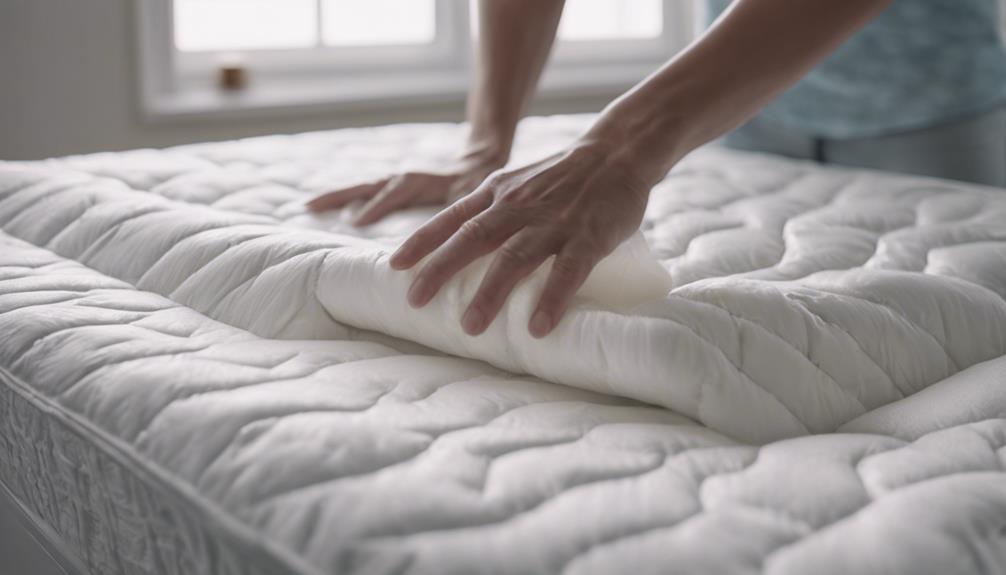
For those looking to maximize the lifespan of their mattress pad, regularly rotating it can help promote even wear and extend its durability. By rotating the mattress pad every few months, you guarantee that different areas receive equal pressure and use, preventing premature wear and tear.
Additionally, using a mattress protector is a smart way to shield the pad from spills, stains, and allergens, ultimately boosting its longevity. Washing the mattress pad every other month is essential for maintaining cleanliness and preventing deterioration. Follow the manufacturer's care instructions for drying to avoid damaging the pad in the dryer, as improper drying methods can lead to shrinkage or damage to the materials.
Investing in a mattress pad made from high-quality materials and construction can greatly contribute to its durability and longevity, providing you with comfort and protection for years to come. Remember, proper care and attention to detail can go a long way in preserving the quality of your mattress pad.
Maintaining Quality and Effectiveness
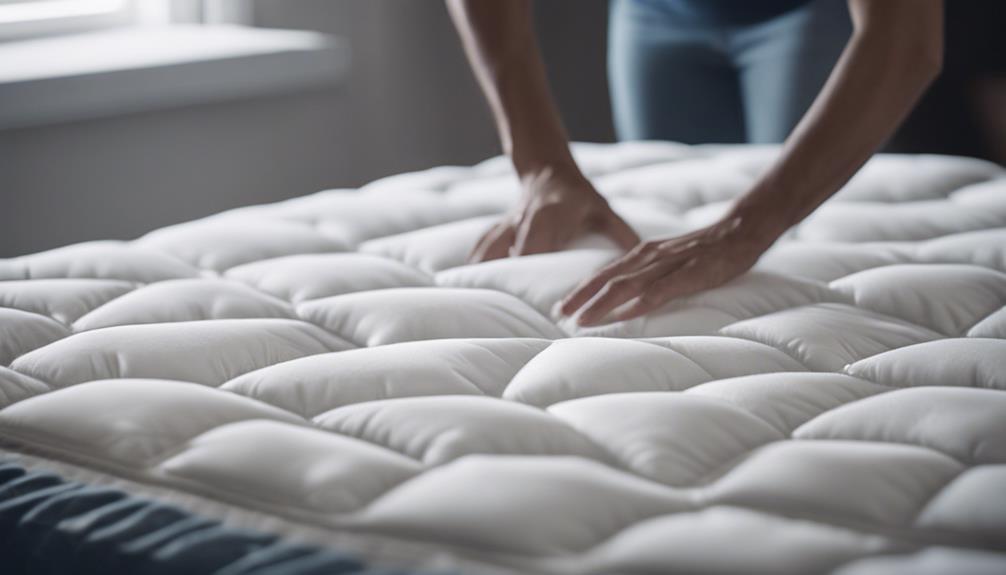
Maintaining the quality and effectiveness of your mattress pad is vital for ensuring its longevity and comfort. When it comes to drying your mattress pad, following the care label instructions is essential. Here are some key points to keep in mind:
- Tumble Drying: Most mattress pads can be tumble dried on low heat settings, which helps preserve the pad's quality and effectiveness by ensuring thorough drying.
- Fluffing Up: Using a dryer can also help fluff up the mattress pad, keeping it soft and comfortable for a good night's sleep.
- Eliminating Excess Moisture: Properly drying the mattress pad in the dryer helps eliminate any excess moisture, preventing mold or mildew growth and extending the pad's lifespan.
Continued Protection and Comfort
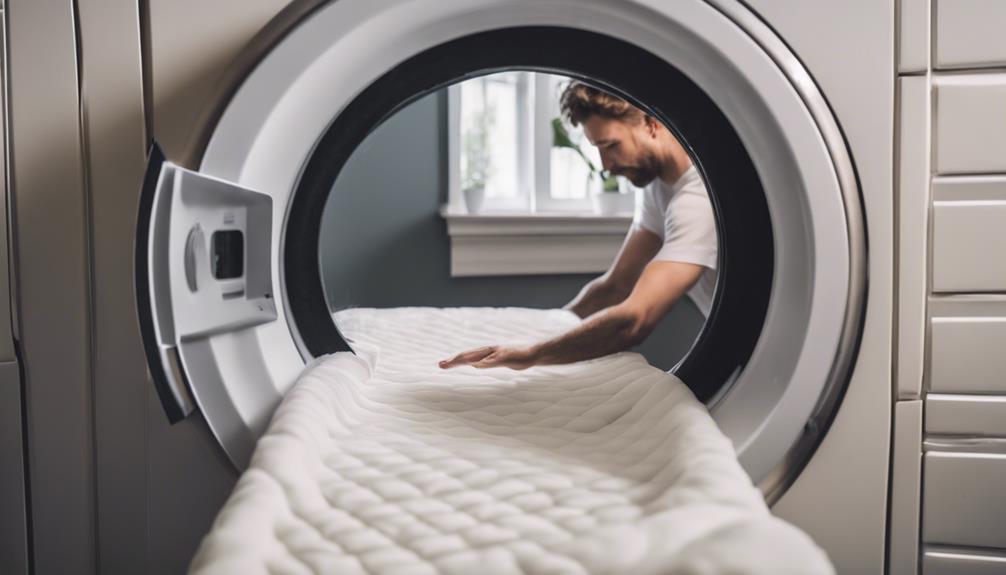
When it comes to continued protection and comfort for your mattress pad, considering the type of material it's made from, following proper washing instructions, and recognizing the benefits of using it can make a significant difference.
Different pad material types may require specific care in the dryer to maintain their quality. By sticking to the recommended drying methods, we guarantee that our mattress pad continues to provide the protection and comfort we rely on.
Pad Material Types
After considering the care label instructions, we found that various mattress pad materials require specific drying techniques to guarantee longevity and performance. When it comes to drying your mattress pad, it's important to follow the manufacturer's recommendations to maintain its quality.
Here are some tips based on the material type:
- Memory Foam Mattress Pads: Avoid putting them in the dryer to prevent damage to the foam material.
- Cotton Mattress Pads: Generally safe for tumble drying on low heat settings for convenience.
- Polyester Mattress Pads: Suitable for machine drying on a gentle cycle to maintain shape and durability.
Always refer to the care label for precise drying instructions tailored to your mattress pad's material composition.
Proper Washing Instructions
Considering the care label instructions for mattress pad material types, it's vital to adhere to proper washing instructions to guarantee continued protection and comfort. Most mattress pads can be conveniently washed in a washing machine, but always remember to check the care label for specific details.
When it comes to drying, using low heat settings in the dryer is generally safe for most mattress pads, ensuring they maintain their shape and fluffiness. Tumble drying the mattress pad after washing is an efficient way to achieve a fresh and clean sleeping surface.
Following the manufacturer's recommended drying instructions is key to preserving the quality of the mattress pad and prolonging its lifespan. It's crucial to avoid high heat settings during drying to prevent any potential damage to the fabric or filling materials.
Benefits of Using
Using a quality mattress pad not only enhances comfort but also provides continued protection against spills, stains, dust mites, and allergens, ultimately extending the lifespan of your mattress. When you invest in a mattress pad, you're not just adding a layer of coziness; you're creating a shield against potential harm.
Here are some key benefits:
- Protection: Shields your mattress from spills, stains, dust mites, and allergens.
- Comfort: Adds an extra layer of cushioning for a more comfortable sleep experience.
- Extended Lifespan: Helps preserve your mattress, saving you money in the long run.
With a mattress pad, you can sleep peacefully knowing your bed is safeguarded while you enjoy enhanced comfort every night.
Avoiding High Heat Settings
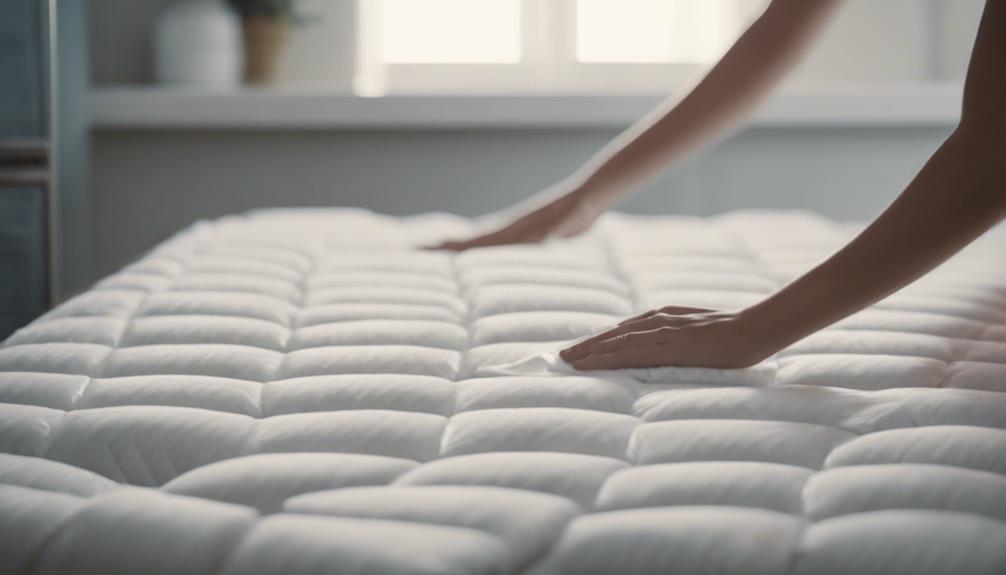
To prevent damage to the mattress pad materials, it's advisable to avoid using high heat settings when putting a mattress pad in the dryer. Opting for low or gentle heat settings during the drying process can help maintain the integrity of the mattress pad. High heat can lead to issues like shrinking, melting, or even affecting the waterproof properties of the pad.
By following the care instructions provided on the label, especially if the mattress pad is machine washable, you can make sure that you use the appropriate heat level for drying. Gentle heat not only protects the mattress pad from potential damage but also helps in preserving its shape and structure over time.
Considering the waterproof properties of the pad, using a low heat setting is important to maintain its effectiveness. So, when it comes to drying your mattress pad, remember that gentle heat is the way to go for long-lasting comfort and protection.
Checking Label for Special Considerations
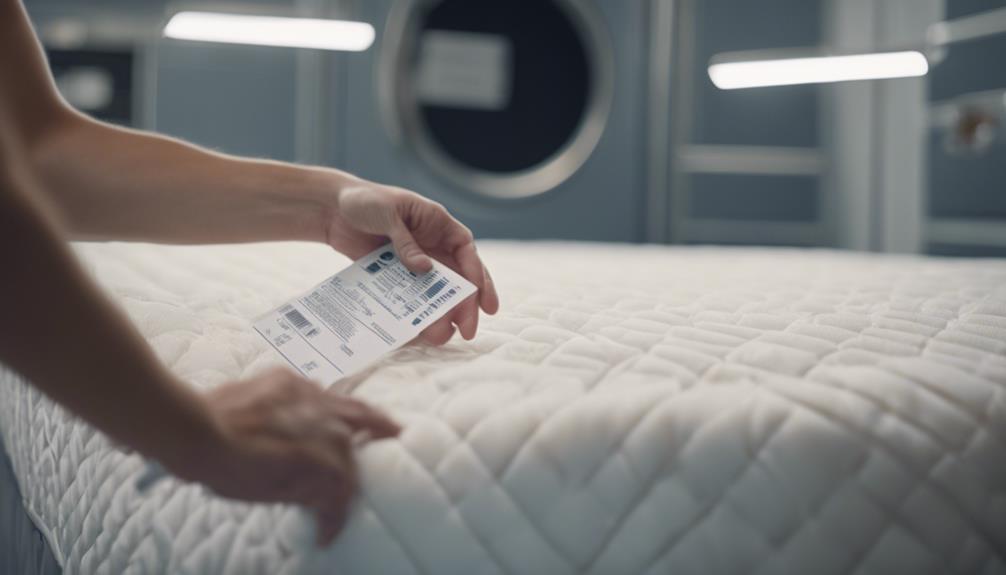
When preparing to dry your mattress pad in the dryer, always refer to the care label for any special considerations. Checking the care label guarantees you follow the specific drying instructions tailored to your mattress pad. Here are some key points to keep in mind:
- Low Heat Settings: Some mattress pads can be safely tumble dried on low heat settings, as indicated on the care label. This gentle heat helps prevent damage to the pad while efficiently drying it.
- Foam Material: If your mattress pad contains foam material, it may not be suitable for drying in the dryer. Foam can be sensitive to high temperatures and may lose its shape or integrity when exposed to heat.
- Air Drying: When in doubt or if the care label recommends it, opt for air drying your mattress pad. This method is gentle and ensures that the pad retains its quality over time.
Frequently Asked Questions
Can You Put a Mattress Pad Cover in the Dryer?
Yes, you can usually put a mattress pad cover in the dryer. Always check the care label first to confirm dryer compatibility. Avoid tumble drying foam or delicate fabrics to prevent damage.
If the label advises against the dryer, opt for line drying. Following the manufacturer's instructions is key to preserving the quality of your mattress pad cover. Remember, a low heat setting is typically best for drying to maintain the cover's integrity.
Can I Dry My Mattress Topper in a Dryer?
Drying your mattress topper in a dryer can be a game-changer. But hold up! Not all toppers are dryer-friendly. Watch out for those heat-sensitive latex, natural, or organic toppers.
Foam, gel foam, and synthetic latex? Nope, they're too bulky and sensitive to heat. And wool? Shrinkage alert! Opt for down or synthetic down toppers—they're usually safe for low-heat drying.
Always check the manufacturer's guidelines for specifics!
Can You Put a Foam Pad in the Dryer?
We recommend against putting a foam pad in the dryer. Heat from the dryer can damage the foam material, leading to loss of shape and integrity.
To maintain quality and longevity, air drying is best. Spot clean any stains or odors and let the pad air dry.
Always follow the manufacturer's care instructions for cleaning and drying to preserve your foam pad. It's essential for ensuring its durability and performance.
How to Dry a Mattress Protector?
When drying a mattress protector, it's crucial to follow care instructions for best results. Most protectors can be machine washed and dried on low heat, but materials like foam may require air drying.
For cotton waterproof protectors, tumble dry on a low setting, while vinyl ones should also be dried gently. Ironing is generally not recommended, as it can damage waterproof features. Utilizing a fan can help speed up the drying process effectively.
Conclusion
To wrap up, it's best to avoid putting a mattress pad in the dryer. Following the manufacturer's guidelines and using recommended heat settings will help prevent damage and prolong its lifespan.
Remember, a stitch in time saves nine, so taking care of your mattress pad properly will guarantee continued protection and comfort for a good night's sleep.
Always check the label for any special instructions to keep your mattress pad in top condition.
